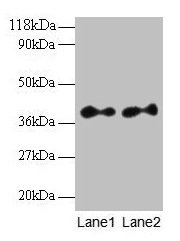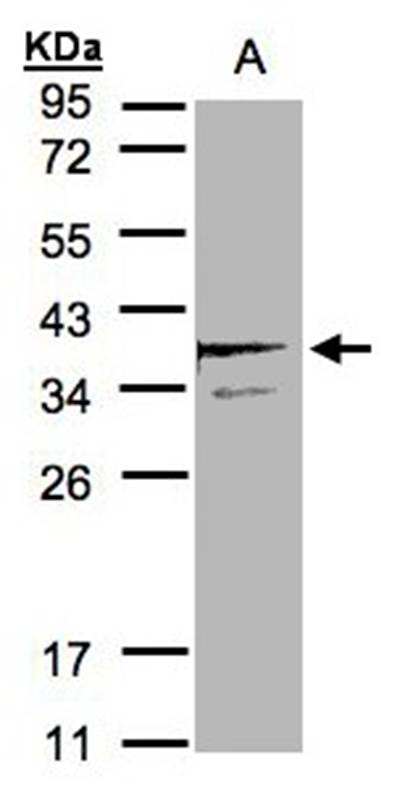SCAMP3 antibody [N1N3]
GTX102216
ApplicationsImmunoFluorescence, Western Blot, ImmunoCytoChemistry, ImmunoHistoChemistry, ImmunoHistoChemistry Paraffin
Product group Antibodies
TargetSCAMP3
Overview
- SupplierGeneTex
- Product NameSCAMP3 antibody [N1N3]
- Delivery Days Customer9
- Application Supplier NoteWB: 1:500-1:3000. ICC/IF: 1:100-1:1000. IHC-P: 1:100-1:1000. *Optimal dilutions/concentrations should be determined by the researcher.Not tested in other applications.
- ApplicationsImmunoFluorescence, Western Blot, ImmunoCytoChemistry, ImmunoHistoChemistry, ImmunoHistoChemistry Paraffin
- CertificationResearch Use Only
- ClonalityPolyclonal
- Concentration1 mg/ml
- ConjugateUnconjugated
- Gene ID10067
- Target nameSCAMP3
- Target descriptionsecretory carrier membrane protein 3
- Target synonymsC1orf3, secretory carrier-associated membrane protein 3, propin 1
- HostRabbit
- IsotypeIgG
- Protein IDO14828
- Protein NameSecretory carrier-associated membrane protein 3
- Scientific DescriptionThis gene product belongs to the SCAMP family of proteins which are secretory carrier membrane proteins. They function as carriers to the cell surface in post-golgi recycling pathways. Different family members are highly related products of distinct genes, and are usually expressed together. These findings suggest that the SCAMPs may function at the same site during vesicular transport rather than in separate pathways. Two transcript variants encoding different isoforms have been found for this gene. [provided by RefSeq]
- Storage Instruction-20°C or -80°C,2°C to 8°C
- UNSPSC12352203
References
- Choi S, Yang Z, Wang Q, et al. Displaying and delivering viral membrane antigens via WW domain-activated extracellular vesicles. Sci Adv. 2023,9(4):eade2708. doi: 10.1126/sciadv.ade2708Read this paper
- Lu JY, Brewer G, Li ML, et al. Secretory Carrier Membrane Protein 3 Interacts with 3A Viral Protein of Enterovirus and Participates in Viral Replication. Microbiol Spectr. 2021,9(1):e0047521. doi: 10.1128/Spectrum.00475-21doi: 10.1128/spectrum.00475-21Read this paper
- Nüchel J, Tauber M, Nolte JL, et al. An mTORC1-GRASP55 signaling axis controls unconventional secretion to reshape the extracellular proteome upon stress. Mol Cell. 2021,81(16):3275-3293.e12. doi: 10.1016/j.molcel.2021.06.017Read this paper
- Tseng HW, Li SC, Tsai KW. Metformin Treatment Suppresses Melanoma Cell Growth and Motility Through Modulation of microRNA Expression. Cancers (Basel). 2019,11(2). doi: 10.3390/cancers11020209Read this paper






